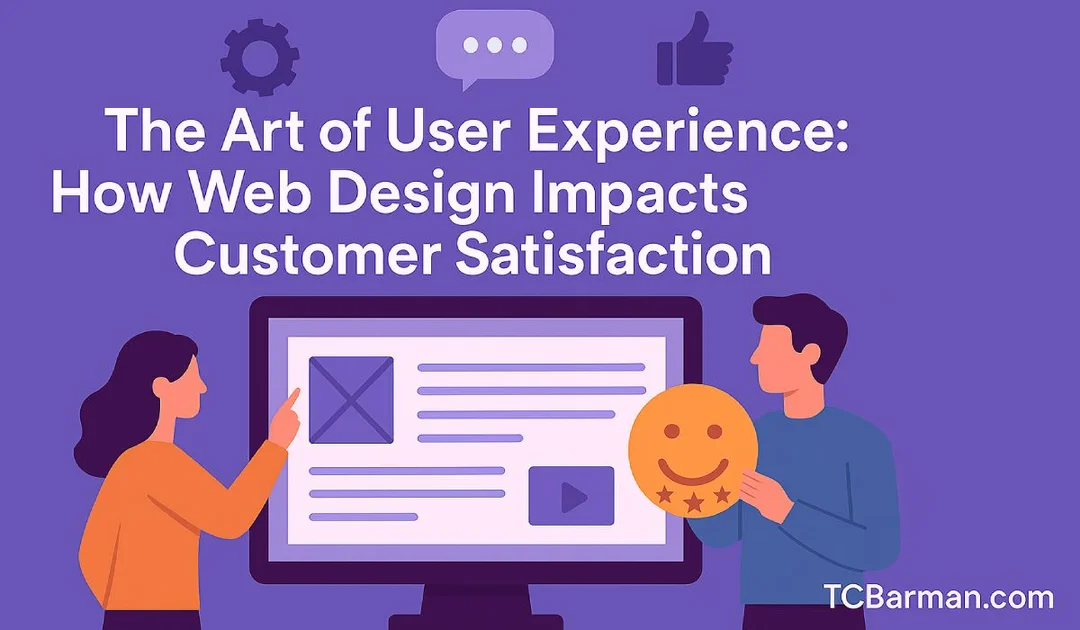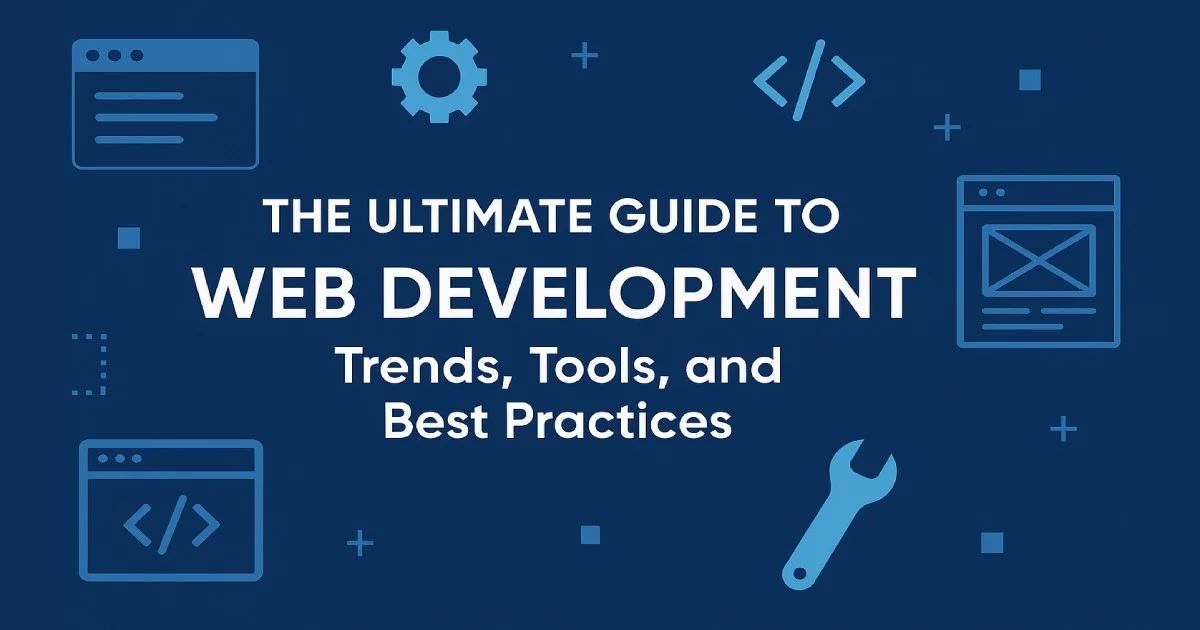In today’s digital world, your website is often the first interaction a potential customer has with your brand. Whether you run an online store, a service business, or even a non-profit, the experience users have on your site can make or break their decision to stick around. This is where User Experience (UX) design comes into play. But UX is much more than just how pretty a website looks; it's about making sure visitors feel comfortable, are able to find what they’re looking for, and can do so with minimal effort.
In this blog, we’re going to delve into the profound impact of UX design on user satisfaction. The choices you make in web design can significantly influence how satisfied your customers are. If you get it right, you’ll not only see happier users but also a much higher chance of converting them into loyal customers. This underscores the crucial role you play in shaping a positive online experience for your audience.
What is UX Design, Really?
Let’s start with the basics. User Experience (UX) is all about how a person feels when they interact with a website, app, or any digital interface. It’s the sum total of everything they experience—whether it's how easy it is to use, how quickly they can navigate through the pages, or how seamless the overall process is. Good UX design makes everything intuitive, efficient, and pleasant for the user. When someone visits your site, it should feel like they’re getting exactly what they need with as little friction as possible.
Now, while UX and web design are often used interchangeably, they’re not quite the same thing. Web design is about aesthetics—the colors, images, layout, and typography. UX design, on the other hand, is about making sure all those elements work together to create a smooth, enjoyable experience for the user. In short, web design is just one piece of the UX puzzle.
Why Does UX Design Matter So Much?
1. The First Impression is Key
When a user lands on your website, you have mere seconds to grab their attention. According to studies, visitors form an opinion about your site in just 0.05 seconds. If the page takes too long to load, if it’s hard to navigate, or if it doesn’t look appealing, the chances of losing them are high. So, you’ve got to make it count from the very first interaction. A well-designed site immediately signals professionalism and trustworthiness, while poor design can make users feel uncertain and prompt them to leave.
2. Clear Navigation is Everything
One of the biggest factors in creating a positive user experience is how easy it is to get around your website. If people can’t quickly find what they’re looking for, they’re going to get frustrated. Think about it—if you’ve ever landed on a website that’s hard to navigate, you probably didn’t stick around for long.
Your goal should be to ensure that every user can find what they need in as few clicks as possible. Easy-to-find menu options, well-labeled categories, and straightforward site maps help guide users in the right direction, making their experience more enjoyable.
3. Fast Load Times Lead to Happy Users
We live in a world where instant gratification is expected. Users aren’t patient when it comes to waiting for a page to load. Google research shows that if your site takes longer than 3 seconds to load, more than half of users will abandon it. And once that happens, you might have lost them for good.
It’s essential to optimize your website so it loads as quickly as possible. This means compressing images, removing unnecessary scripts, and cleaning up excess code. A fast-loading site doesn’t just make users happy—it also improves your search engine ranking, so it's a win-win!
4. Mobile Optimization Isn’t Optional
f your website isn’t optimized for mobile devices, you’re missing out on a huge portion of your audience. With more people browsing the web on their phones than ever before, it’s crucial that your website works well on any device. If users have to zoom in or struggle to click buttons on a small screen, they’ll quickly bounce away.
Responsive design ensures that your site automatically adjusts to fit any screen size. A mobile-friendly website provides the same seamless experience as its desktop counterpart, which helps keep users engaged and satisfied, no matter how they access your site.
5. Clear Calls-to-Action (CTAs) Make a Difference
When you want users to take a specific action—whether it’s buying a product, signing up for a newsletter, or getting in touch—you need a clear call-to-action (CTA). Your CTA buttons should be easy to find, visually distinct, and compelling enough to drive action.
The placement and wording of CTAs also matter. They should be strategically placed throughout your site, and the language should be direct and to the point. If users don’t know what to do next, they’ll leave without completing your desired action.
How Does Web Design Affect UX and Customer Satisfaction?
Now that we’ve covered the basics, let’s take a closer look at how specific elements of web design affect user satisfaction.
1. The Aesthetics Matter
Let’s face it: the first thing most people notice about a website is how it looks. A visually appealing website creates an instant impression of quality and professionalism. But good design goes beyond just being pretty. It’s about making sure that colors, fonts, and images all work together in harmony. For example, using too many contrasting colors or fonts can make your site feel chaotic and unpleasant to use.
Simple, elegant design that aligns with your brand and creates a positive emotional response from users is the key to a good aesthetic. Strive for balance, consistency, and visual clarity.
2. Content Layout and Structure
Content is king, but how you present it matters just as much. If users can’t easily digest your content, they’ll leave without reading it. Make sure that your text is easy to read by choosing appropriate font sizes, using headings to break up sections, and avoiding long paragraphs. Bullet points and images can help clarify key information and make your site more engaging.
A well-structured layout ensures that users can easily scan the page and find what they need without feeling overwhelmed.
3. Consistency is Key
Consistency creates familiarity and trust. If the design elements, navigation, and functionality are consistent across your website, users can quickly adapt to the site’s layout and start feeling comfortable. Inconsistent design, on the other hand, can be confusing and cause frustration. Whether it’s the way buttons look or how content is organized, consistency helps keep users focused and ensures they’re not distracted by confusing design choices.
4. Interactive Elements and Feedback
Users love to feel like they’re in control, and interactive elements—like buttons, forms, and links—play a big role in this. Good design ensures these elements are easy to use and provide immediate feedback. For example, if a user clicks on a button, they should see some visual change (like a color shift or animation) to let them know the action has been registered.
Even small touches like hover effects or confirmation messages after a user submits a form can go a long way toward enhancing the user experience.
Wrapping Up: Prioritize UX for Long-Term Success
At the end of the day, great web design is about more than just how your site looks. It’s about creating an experience that users find enjoyable, intuitive, and valuable. By focusing on speed, navigation, mobile optimization, and clarity, you can create a site that satisfies visitors and keeps them coming back.
When users enjoy their experience on your site, they’re more likely to trust your brand, engage with your content, and, ultimately, become loyal customers. So, if you want to stay competitive in today’s digital landscape, putting time and effort into improving your website’s UX is a smart investment.
Remember, good UX isn’t just about meeting expectations—it’s about exceeding them. And when you do that, your customers will thank you for it.

